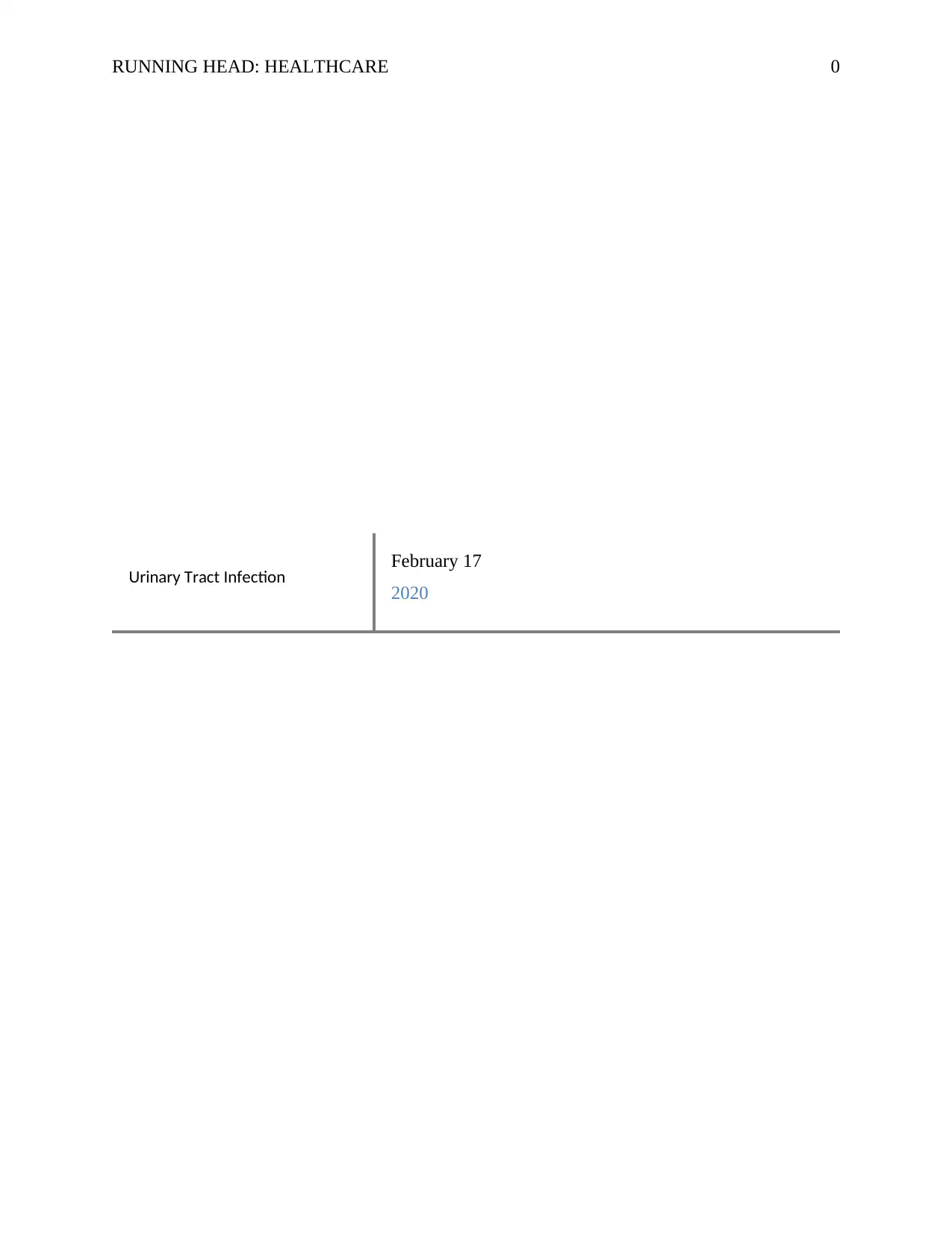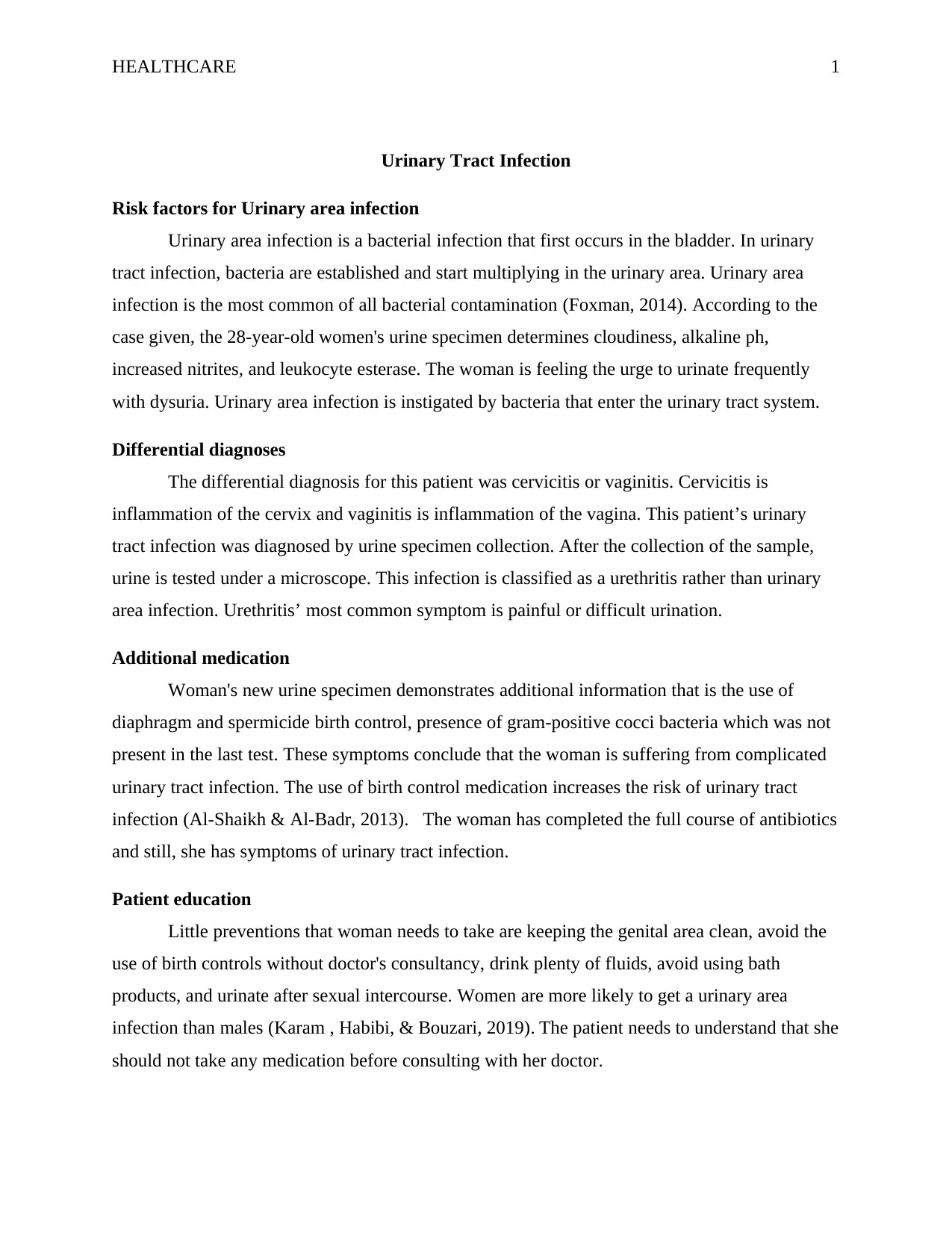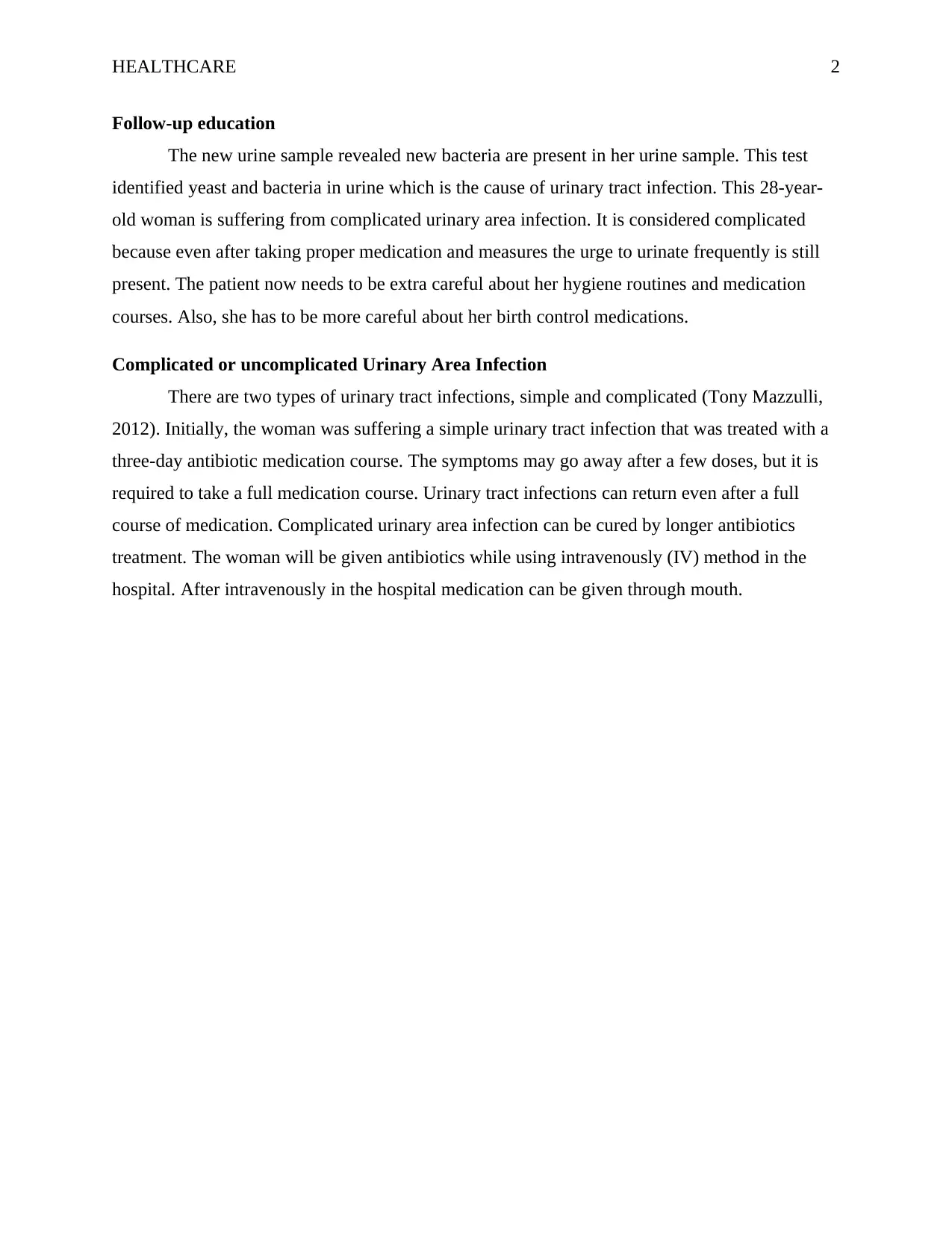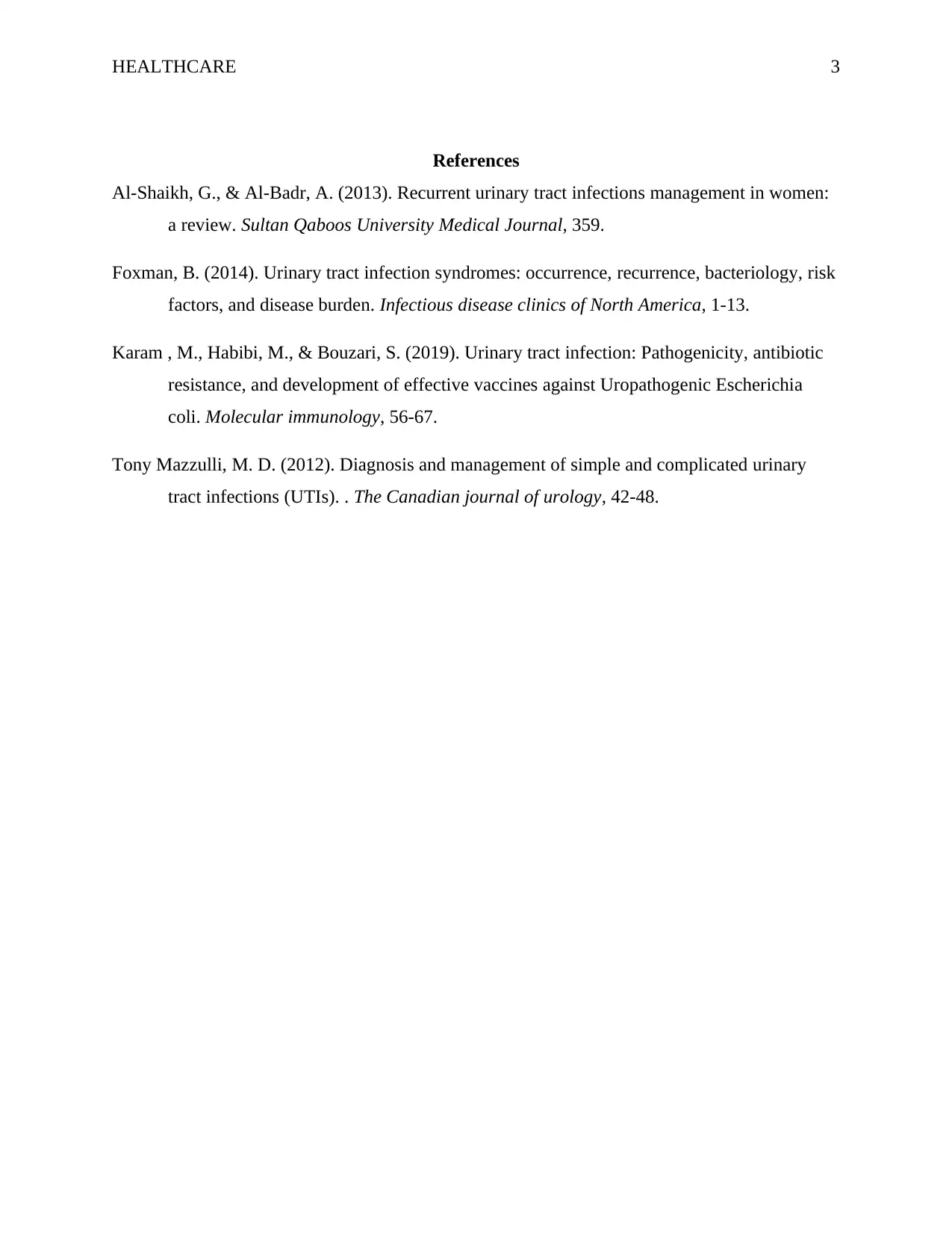Healthcare Case Study: UTI Diagnosis, Treatment, and Patient Education
VerifiedAdded on 2022/08/13
|4
|729
|25
Case Study
AI Summary
This case study analyzes a urinary tract infection (UTI) in a 28-year-old woman, detailing her symptoms, including frequent urination and dysuria. The analysis includes differential diagnoses like cervicitis or vaginitis, and identifies risk factors such as the use of birth control. The study examines the urine specimen results, highlighting the presence of bacteria and yeast, and differentiates between simple and complicated UTIs. The solution outlines the treatment course, including antibiotics and patient education on hygiene and medication. The case also discusses follow-up education and the need for further investigation if symptoms persist, with a focus on the patient's specific situation. The study emphasizes the importance of consulting a doctor before taking any medication and the need for careful hygiene and birth control practices.
1 out of 4











![[object Object]](/_next/static/media/star-bottom.7253800d.svg)